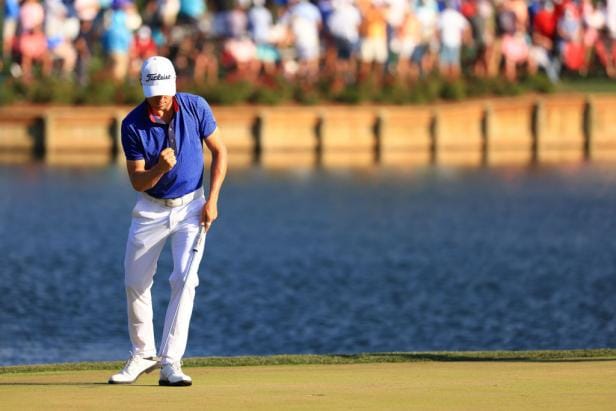In the early days of golf, speed and distance were viewed as risky elements to be used sparingly by professional players. The goal was to find just the right amount of power without losing control. However, when Tiger Woods burst onto the scene in the late 1990s and early 2000s, everything changed. Woods dominated the sport with his long drives, prompting other players like Vijay Singh and Phil Mickelson to also prioritize distance on the course.
This shift in strategy was evident in the rise of the “Bomb and Gouge” approach, where players aimed to hit the ball as far as possible and deal with any obstacles in their way. This aggressive style focused on maximizing power and creating more birdie opportunities from shorter approach shots. Traditionalists in golf were wary of this new trend, fearing the game would become one-dimensional.
While the Bomb and Gouge approach gained traction, it did not entirely revolutionize the sport as predicted. Players like Bryson DeChambeau, who focused on gaining muscle and increasing his power, demonstrated the benefits of distance. His victory at the U.S. Open in 2020 solidified the importance of power on the tour. However, the top players in golf today are not solely defined by their distance off the tee.
The current landscape of professional golf reveals that distance is a crucial factor, but not the only strategy for success. The best players in the world require a balance of distance and control, as well as elite skills in other areas of the game. Players like Scottie Scheffler, Justin Thomas, and Matthew Fitzpatrick have honed their game to leverage their strengths, whether it be iron play, shot-making ability, or short game prowess.
Major winners like Cameron Smith, Jon Rahm, and Collin Morikawa have shown that distance alone is not enough to dominate in golf. While driving the ball far is advantageous, it is ultimately a combination of skills that separates the elite players from the rest. The +1 era of golf emphasizes the importance of a well-rounded game, where players must excel in multiple facets to succeed at the highest level.
As the sport continues to evolve, the focus on distance remains prevalent but is now seen as a threshold that players must cross to be competitive. The current landscape of professional golf emphasizes the need for a balance of power, control, and precision to excel. While launching long drives may capture attention, it is the intricacies and complexities of the game that truly showcase the skill and talent of the world’s best players.


